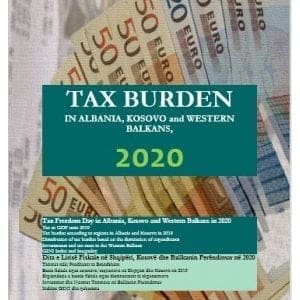Bashkohuni me ekipin tonë. A jeni gati të rrisni biznesin tuaj? Mëso më shumë
Tax notes for construction industry in Albania
0 €
The purpose of these tax notes designed for the construction sector is to help tax auditors, assessment and collection, debt management inspectors as well as other interested users or groups to expand their knowledge about some particular construction activities or the construction sector in general. These notes are particularly recommended for use by all people involved in conducting tax audits.
- Description
Description
The construction sector represents a major part of our economy. It counts around two thousand taxpayer registered with significant turnover, which make of this sector one of the biggest in our economy. Construction accounts approximately for 12% of Albanian GDP. In the year 2009, a total of 28,400 VAT, Profit Tax and Simplified Profit Tax returns were submitted to the tax authorities by the construction business in Albania, reporting a total turnover of above 145 billion Leks (1.18 billion Euros). Detailed statistics about construction are provided in Appendix C.
This book is divided in six chapters, and the first chapter explains the participants in construction industry. Their role represents a specific taxpayer and specific process of construction. Meanwhile in the construction process there are other professionals and activities with an important contribute in construction. On the other hand all these “actors” play the roles based in the typical contracts, presented in this chapter with the term explanation.
In the second chapter is described the role of small contractors, individual and collective employment contracts, cash payments and payments via bank. Also in this part of Industrial notes there is an important part for tax audit in order to know about some audit methodologies, as: Cost comparison method; Labor force comparison method; Contract terms fulfillment method and some key issues and audit techniques.
Third chapter includes definition about principal contractors and long-term contracts, externalities and cost comparison method, but also look-back method. This part explains the definition of completed Contracts and general information necessary for auditing companies and suggested audit techniques.
In the fourth chapter there is an insight about residential developers, categories and how they work and develop their contracts with landowners, investors and some specific Agreements between tax administration and Albanian Constructors Association, accompanied with official orders and instruction how to complain the taxpayers of this economic sector.
The fifth chapter explains in depth the forms of tax audit of construction balance sheet and tax returns. This chapter includes definition about fiscal legislation and specifics for construction including the specific cases as well as bankruptcy in construction
In the final chapter, the sixth you may find information about organizational structure of construction, mostly about the partnership in construction industry and the specific issues to consider in the construction activity process and issues of profit distribution relations within partnerships.
To be in help about the knowledge of the construction industry in the book, finally there are four appendixes and a Fiscal glossary.










